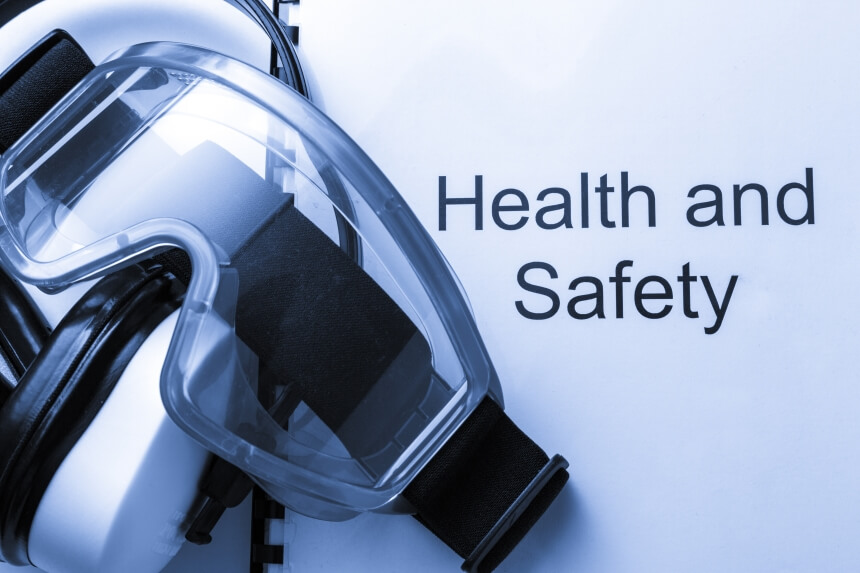
In this discussion, a different perspective is taken for a moment. Instead of only considering worker behaviours, the discussion centres on employer behaviours. Though using drugs or alcohol in the workplace is a personal decision, albeit a poor one, the employer should understand that a drug and alcohol testing program should be a layer on a foundation of employee respect and fair management practices. The program is not something that is simply added without considering the organisational culture and how the program fits in it as a positive and supportive component to worker and business success.
All employers have a duty of care to protect the occupational health and safety of employees through management policies and performance. Many managers tend to view drug and alcohol testing as a legally required, standalone program, when it should be viewed in as a component of a larger safety and wellness program. The broad occupational health and safety (OHS) elements of business success include developing a system for managing OHS, differentiating between a policy and a procedure, integrating OHS planning with the business plan, allocating responsibilities and accountabilities to staff, and developing a system for communicating information to workers.1
A drug and alcohol policy and supporting testing procedures are integral to each one of these elements of business success as pieces of the larger picture. For example, there should be a well developed policy promoting a substance free workplace, a random drug and alcohol testing program that represents administration of the policies, clear definition of the role of drug and alcohol policies and procedures as a component of worker wellness and safety programs, staff training that ensures fair application of procedures and enhances a supportive workplace environment, and a worker training program for conveyance of the policies and procedures.
Employees as Stakeholders in Substance Free Workplace and Community
A simple way of looking at this concept is that a wellness program failing to address substance use and abuse as a health and safety issue is also failing to meet the elements of business success. In fact, successful businesses that embrace their duty to promote worker safety use a strategy in which employees act as role models and actively participate on safety committees and accept responsibility for developing and communicating ongoing training programs. The programs include educating workers on the safety risks associated with the use of drugs and alcohol. Engaging employees in a collaborative manner sends a clear message that workers are stakeholders in workplace safety and have a duty to follow safe work practices and procedures, and refusing to use drugs and alcohol in the workplace is one of those practices.
Beyond safety issues, the workplace is increasingly being viewed as a setting in which a large number of people can be exposed to health promotion activities that have community, and not just workplace, relevance. The reason is obvious – a large percent of the population is employed. Proponents of using the workplace as a public information intervention site argue that this approach assists employers with complying with occupational safety and health as much as it helps the broader community.
Taking a Broader View
For example, there is evidence in many cases that workplace factors contribute to high risk alcohol consumption. Employers are interested in exercising their duty of care and minimising harm, whilst public education programs aim to change behaviours and workplace environments. However, there is no single reason that can be named to explain why people over-consume alcohol and no single effective response. Patterns of alcohol consumption are tied to work and personal life; therefore, it makes sense to view the employer’s duty of care and workplace safety in the broadest sense.2
Perhaps in the final analysis, this is merely a sophisticated way of saying that work lives and personal lives intersect, so workplace education measures addressing alcohol and drug use makes perfect sense. The employer fulfils a duty of care, whilst promoting workplace safety and responsible community behaviour. The reward is a healthier workforce and a safer workplace, and both contribute to business success. Workers take their cues from employers, which means employers must clearly convey drug and alcohol policies and procedures which define performance accountability and management expectations. The message sent to employees must be absolutely clear: health and safety is a priority.
CMM Technology helps facilitate OHS and operational objectives by providing employers with quality drug and alcohol testing supplies. Random testing programs are simpler to administer when reliable testing supplies are used.
References
1. Placing Workers in Safe Workplaces. (2006, June). Retrieved from Worksafe - Victoria Government: http://www.worksafe.vic.gov.au/__data/assets/pdf_file/0011/10082/placing_labour_hire.pdf
2. Cercarelli, Dr. Rina, Professor Steve Allsop, Dr. Michaela Evans & Dr. Fredrik Velander. (2012, March). Reducing alcohol-related harm in the workplace (An evidence review: full report). Retrieved from National Drug Research Institute - Curtin University of Technology: http://ndri.curtin.edu.au/local/docs/pdf/publications/T214.pdf
Categories
Archive
- February 2022
- October 2021
- June 2021
- November 2020
- October 2020
- June 2020
- March 2020
- February 2018
- December 2017
- August 2017
- February 2017
- September 2016
- August 2016
- October 2013
- September 2013
- July 2013
- May 2013
- February 2013
- December 2012
- November 2012
- August 2012
- June 2012
- February 2012
- December 2011
- October 2010
